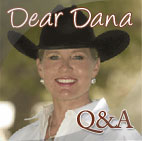The cow horse world lost a legend in late 2016 when Benny Guitron passed away, and on Jan. 29 it came together for a heartfelt celebration of life for the Merced-based trainer. More than 400 friends and family attended the memorial hosted by Loren Booth in Minkler. Benny, a National Reined Cow Horse Hall of Famer and the 1976 NRCHA Snaffle Bit Futurity Open Champion, had died the previous month from complications in his battle against cancer.
Great news came out of the Los Angeles Equestrian Center on Jan. 26 when it announced that the California Department of Food and Agriculture released the LAEC from all quarantine, ending an episode of horse health concern that had begun two months earlier with confirmed cases of the EHV-1 virus. Dr. Katie Flynn, California’s State Regulatory Veterinarian, applauded LAEC’s management, staff, horse owners and trainers for their diligence and teamwork in the situation. With 725 horses on the property, a large show facility and public trails, the challenge was large and immediate.
“Their responsiveness to regulatory recommendations truly demonstrated that they had horse health and the best interest of the horse as their priorities,” said Dr. Flynn.
Larry Langer, a part of the horse industry for 66 years — from starting lessons as a child to his induction into the Show Jumping Hall of Fame — was honored in January for his devotion to equestrian sport with the Lifetime Achievement Award.
“It was both a surprise and a great honor to be chosen for this award, and I am extremely grateful to have been selected,” said Larry. “I am very proud to figuratively stand next to the likes of Bill Steinkraus, Frank Chapot, George Morris, Jimmy Woford, and Bert De Nemethy. It truly represents the crowning achievement of my lifetime in a sport that I love dearly, and it pays tribute to the horse, who plays the essential role in it.”
Volunteers step up to help in Northern California wildfires — including Horse Expo staffers
Few situations are more terrifying than an oncoming wildfire seemingly intent on consuming all in its path. October’s headlines spoke of the loss from California wildfires that leveled towns and took lives of both people and animals. This year’s fires were the worst in state history. Insurance data reports that from Oct. 6 to Oct. 25, eight counties in Northern California were hit by a devastating outbreak of wildfires which led to at least 23 fatalities, burned 245,000 acres and destroyed over 8,700 structures. The California Department of Insurance said that as of Oct. 26, losses reported from 15 major insurers totaled $3.3 billion.
When the heat is on, volunteers step up, using what resources are available to assist. In the case of Marcy Goodman, the longtime Project Manager for the Western States Horse Expo, that meant using all means possible to reach people who could help as well as those in need.
Even though the major fires were hundreds of miles away, Goodman knew she had to do something — quickly. Miki Nelsen, owner of Western States Horse Expo, gathered staff for ideas and immediately sent an email broachcast to the Horse Expo community, asking for help for the fire victims and their animals.
EquestFest returns this month better than ever!
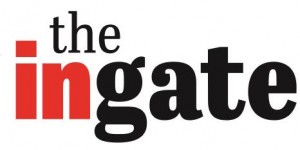 Get up-close and personal with the 2018 Rose Parade equestrian units at Equestfest, scheduled for Friday, Dec. 29, at the Los Angeles Equestrian Center. Presented by Wells Fargo, EquestFest gives the public a chance to watch beautiful horses and talented riders perform drills and dances and demonstrate trick riding and roping, as well as the chance to stroll through the stables, talk to riders and learn about the various tack and the many different breeds while enjoying the vendor court, displays, great music, food and drinks.
Get up-close and personal with the 2018 Rose Parade equestrian units at Equestfest, scheduled for Friday, Dec. 29, at the Los Angeles Equestrian Center. Presented by Wells Fargo, EquestFest gives the public a chance to watch beautiful horses and talented riders perform drills and dances and demonstrate trick riding and roping, as well as the chance to stroll through the stables, talk to riders and learn about the various tack and the many different breeds while enjoying the vendor court, displays, great music, food and drinks.
Tournament of Roses President Lance Tibbet is proud to announce 20 outstanding equestrian groups will ride in the 129th Rose Parade, presented by Honda this year with a theme of “Making a Difference.” The equestrian groups selected are (listed alphabetically): 1st Cavalry Division Horse Cavalry Detachment (Fort Hood, Texas); Broken Horn Ropers (Baldwin Park); Budweiser Clydesdales (St. Louis, Mo.); California Highway Patrol Mounted Patrol Unit (Sacramento); Long Beach Mounted Police, Los Angeles County Sheriff’s Department Mounted Enforcement Detail; the Los Angeles Police Department Metropolitan Division Mounted Platoon, Honor Guard, Bagpipe & Drum Band; Los Hermanos Bañuelos Charro Team (Altadena); Mane Attraction Equestrian Drill Team (Riverside); Mini Therapy Horses (Calabasas, California); The New Buffalo Soldiers (Shadow Hills); the Norco Cowgirls & The Little Miss Norco Cowgirls Rodeo Drill Teams; Ramona – California’s Official Outdoor Play (Hemet); Scripps Miramar Ranch (San Diego); So Cal Mini Horse Sanctuary, Inc. (Hemet); Spirit of the West Riders (Leona Valley, California); United States Marine Corps Mounted Color Guard (Barstow); The Valley Center Vaqueros (Valley Center); The Valley Hunt Club (Pasadena); and the Wells Fargo Stagecoaches (Meeker, Okla.)
Lovingfoss shines in CPHA WCE Medal Finals
LAS VEGAS, Nev. — You can call it a “trifecta” for Kaitlyn Lovingfoss.
The junior rider faced 41 junior and amateur equitation riders who had come to South Point Hotel and Casino Nov. 17-18 for the 2017 CPHA Foundation West Coast Equestrians (WCE) Medal Finalsat the Las Vegas National.
Friday afternoon’s first round course with rollback turns and bending lines demanded an accurate ride and track. Lovingfoss topped the field with an initial score of 88, seeking to pull off her third medal final victory of the season. Natalie Dean sat in second place with a score 86.
On Saturday afternoon, every rider had the opportunity to return for the second round, but only the top 10 from the two rounds moved on to the third and final round. The second course included a triple combination and a multitude of tight turns, as well as a time allowed of 78 seconds. Sitting in sixth after day one, twenty-one-year old amateur rider Jayme Omand and her mount Zador dominated this round with a score of 83.75, with a total of 159.25 over the two days, moving into second place overall. Lovingfoss still held a narrow lead with a total of 162.75.
Spooner outduels Gates in `Vegas $50K FEI 1.45m; then wins Longines $100K
LAS VEGAS, Nev. — What happens in `Vegas surely will not remain in `Vegas, as far as the red-hot Richard Spooner is concerned.
The California rider was dominant during the week at the Las Vegas National, which culminated in riding his new equine star, Chatinus, to victory in the $100,000 Longines FEI World Cup™ Jumping Las Vegas.
“I’m just very optimistic for the future with this horse,” Spooner said. “It’s just absolutely blowing my mind.”
Spooner defeated Alison Robitaille and Serise du Bidou to claim the top check, outpacing that duo’s time by nearly three seconds.
Earlier, Spooner had competed in a class of 33 entries aboard the 12-year-old stallion, Arthos R, to win the $50,000 FEI 1.45m Winning Round Classic, presented by Park Place Foundation.
The pre-purchase exam
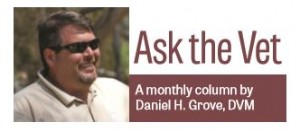 The pre-purchase exam is done when looking at a horse to buy, and you are looking for a professional, objective opinion on a horse prior to purchasing it. Each practitioner is most likely going to use their own method to do it and will include or exclude certain things based on their training and experience. The way I do my exams, they are broken down into two distinct different sections.
The pre-purchase exam is done when looking at a horse to buy, and you are looking for a professional, objective opinion on a horse prior to purchasing it. Each practitioner is most likely going to use their own method to do it and will include or exclude certain things based on their training and experience. The way I do my exams, they are broken down into two distinct different sections.
The Physical
The first part of the exam, I start with an in-depth physical exam. I start at the nose and work my way back. I look in the mouth to check the gums. Next, I run fingers over the teeth to check for current floating status. I move next to the eyes. First, I check the menace response which involves moving toward the eye to see if the horse blinks. After that, I use my ophthalmoscope to do an exam of the back of the eye, called the fundus. I examine the optic nerve and the retina. I move to the ears, looking for parasites or masses.
To judge, or NOT to judge
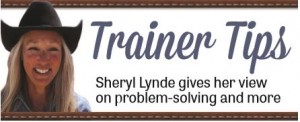 We are confronted with a multitude of distractions every day. It takes an ongoing awareness and effort to leave the world outside the arena in order to learn to focus on ourselves and our horse. Quieting your mind and letting go of distractions allows you to concentrate on your body and your horse’s movements. Attainment of any goal you set, whether it is mastering a specific maneuver or overcoming a habit you have judged as a bad one, depends on your mental game.
We are confronted with a multitude of distractions every day. It takes an ongoing awareness and effort to leave the world outside the arena in order to learn to focus on ourselves and our horse. Quieting your mind and letting go of distractions allows you to concentrate on your body and your horse’s movements. Attainment of any goal you set, whether it is mastering a specific maneuver or overcoming a habit you have judged as a bad one, depends on your mental game.
This takes an understanding of the “inner game” of your mind. It’s the first step that moves aside confusion and fear, replacing them with confidence regardless of the circumstances or surroundings. Being focused on each maneuver is just as instrumental to your training regime as the reins are to the bridle.
In the book “The Inner Game of Tennis,” author W. Timothy Gallway defines judging our efforts as a culprit that leads to trying too hard. For instance, when riders continually judge or place a negative value to a habit as “bad,” such as always leaning in turns, they will begin to identify themselves with the habit itself. They bring this identification to their riding lesson and their focus changes from being aware of what their body is doing to the mindset of what NOT to do.
Two things to avoid
Horsemanship is negotiation and a good negotiation is when I get what I want, and you think you got what you wanted!
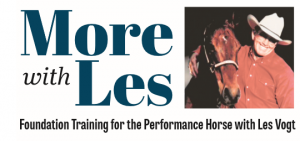 When you are ready for the stop and you take away your legs, don’t say “whoa.” We don’t want a crisp hard stop yet. We want a beautiful energy transfer from the front of the horse to the back, one that just melts. What you are going to feel when it’s right is that there is actually an energy current that goes from his poll, down his spine and to his hind legs. You can stop a litt le harder but don’t say “whoa” at this point; you’re lett ing him melt, and saying “whoa” means “get it into the ground.”
When you are ready for the stop and you take away your legs, don’t say “whoa.” We don’t want a crisp hard stop yet. We want a beautiful energy transfer from the front of the horse to the back, one that just melts. What you are going to feel when it’s right is that there is actually an energy current that goes from his poll, down his spine and to his hind legs. You can stop a litt le harder but don’t say “whoa” at this point; you’re lett ing him melt, and saying “whoa” means “get it into the ground.”
Be careful too that you don’t do a weight transfer with your body as you approach the stop or as you take your legs away. If you do that, you will throw in an element of timing that you are responsible for, and why do you want to do that? Keep your body still so the horse is just reacting to your legs.


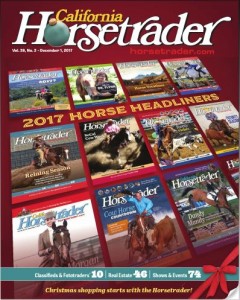
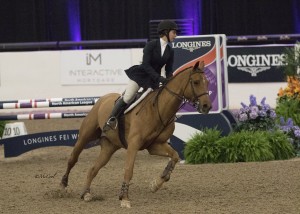
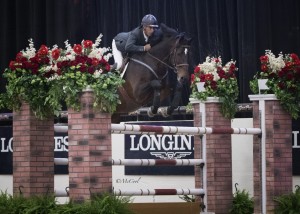
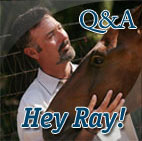
 Read Columns
Read Columns
